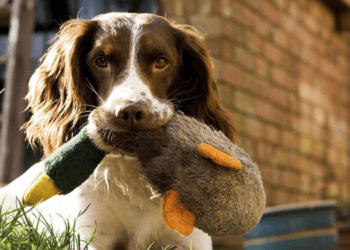Whether we are aware of it or not, we all have certain expectations of how our dogs should behave. But no matter how intelligent or intuitive the dog is, he will not know what these expectations are until we teach him.
Table of Contents
All Dogs Need Some Learning.
I am not a professional dog trainer, so I don’t want to write about how to train your dog. I would, however, like to encourage all dog owners to do so, and to leave you with some tips and insights that may help you with the process.
No matter how small or large your dog, and no matter how well behaved you think he is, for safety’s sake – the dog’s, yours and other’s – all dogs should have at least a minimum of obedience training.
The Basics
For starters, it is important that all dogs have a reliable “recall”, that is that they respond quickly and reliably to the command “come” or whatever word you prefer to use.
They also need to sit or lie down on command, and should be taught to “stay” for at least a minimal amount of time. These two or three commands will at least give you a way to stop the dog from getting into trouble.
Do be careful when calling your dog to you from a distance. If she is responsive, one thing she probably won’t do is to look both ways before rushing across the street. Don’t put her in danger by asking her to come if there is or might be traffic. Use a “down”, “stay” or “stop” instead, then you go get her.
You may also like to read:
Is Your Pet A Therapist in Disguise| Therapy Dogs
Crate Training Puppies – Tips and Advice,
Learning Can be Fun
Dogs can be taught to do almost anything, and most dogs love to learn. They also love to please, which can be used to your advantage in training.
Think Positive!
Though there are many training methods used, I prefer those employing “positive reinforcement”. With positive reinforcement, you reward the dog for doing something right. This increases the likelihood of his doing it again. As much as possible, you simply ignore behavior that is undesirable.
Remember that your dog does not understand English until you teach him. They can learn to understand single words or short phrases, but they must be taught what it is that you expect from them.
Punishing a dog for doing something undesirable rarely has the effect you want. In fact, the dog rarely understands just what he is being punished for, and it can often lead to aggression.
A good example to use here is housebreaking. If you come home to find the dog has soiled the living room carpet and you punish him, he learns that your coming home equals punishment. He won’t understand that it is because he went to the bathroom in the house.
If you catch him in the act and yell at him, he will probably think you mean the living room isn’t a good place to relieve himself. Next time he’ll try the kitchen instead. On the other hand, if you reward him for going to the bathroom outside, he understands immediately that he did a good thing. It got good results (praise, a treat, a pat on the head), so he is very likely to do it again.
Positive reinforcement techniques work very quickly. As I said earlier, dogs love to please. They will try very hard to do that which pleases you, and even harder if that pleasure results in a cookie or a walk for them!
Negative reinforcement training methods, or punishment-based training have a number of drawbacks. While they may work for teaching a dog what not to do, it is very difficult to use punishment or force to teach him to do something. And using force on an aggressive dog can lead to bites and more aggression.
A submissive dog may be so intimidated by the method that she just gives up, “submits” or tries every trick in the book to distract you from your goal.
Operant Conditioning
One very popular positive training technique is called “clicker training”. It was developed by Karen Pryor, a dolphin trainer, and uses the theory of “operant conditioning”.
There are currently many books and videotapes available on the subject. Some local dog trainers use this method in their classes.
Home Schooling or Professional Classes?
While an obedience class is not necessary, it gives you the opportunity to socialize your dog at the same time. This is especially important when the dog is still a puppy. Socialization is every bit as important as training if you intend for your dog to ever come in contact with other humans or animals.
Training in a class environment also provides the necessary distractions to “proof” the behavior; that is to be sure your dog will provide the desired behavior in all situations. If you only ask your dog to sit when you are at the kitchen table for example, he may not understand that the word means the same thing when you are outside.
If your dog has just discovered a squirrel or the neighbor’s cat, you need to know that he will obey your command to sit or “leave it” as easily as if you two were alone in the house.
Goals of Training
Your dog doesn’t have to be a Lassie or Rin Tin Tin, nor does she need to perform tricks for company or get you a beer from the refrigerator (not that it wouldn’t be nice if she could!). She should though, know enough to keep her safe from harm. To protect others she should be trained well enough so as to be under your control at all times. And he should be well enough behaved so as not to be a nuisance to those who may not be as accepting of doggie antics as you are.
Time spent training is time well spent. With positive training techniques you build a bond based on mutual trust. And you may be amazed at how well you and your dog will learn to communicate.
If you are a dog lover then, Subscribe to our weekly newsletters. No Spams!










